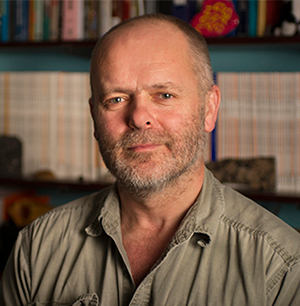 Clive Neal
Clive Neal
Villages on the moon, constructed through cooperation between astronauts and robotic systems on the lunar surface, could become a reality as early as 2030. That’s the consensus of a recent international conference of scientists, engineers and industry experts, including Clive Neal, a University of Notre Dame planetary geologist.
The European Space Agency (ESA) hosted a symposium titled “Moon 2020-2030 — A New Era of Coordinated Human and Robotic Exploration,” in the Netherlands. The ESA’s vision is that the moon villages could serve as a potential springboard for future human missions to Mars and potentially other destinations.
In order for that vision to become a reality, Neal said, scientists must first determine if the resources on the Moon are as significant as we think they are.
“We keep talking about lunar resources, but we still need to demonstrate they can be used … (that) they are, in fact, reserves,” he said. “So ground truth verification of deposit size, composition, form and homogeneity requires a coordinated prospecting program as a first step. The next step would demonstrate extraction techniques followed by refinement of the product into usable commodity. A successful program would then clearly demonstrate that lunar resources can enable solar system exploration."
Neal said the ESA meeting highlighted technology development in terms of precision landing, robotic sample return, and cryogenic sampling, caching, return and curation.
“Significant investments in the latter are required and starting to be made,” he said.
Neal’s research explores the origin and evolution of the moon, focusing on the petrology and geochemistry of returned samples coupled with geophysics and other remotely sensed datasets; geophysical instrumentation and investigations of the moon; formation of impact melts; and more basalt petrogenesis. Passionate about the U.S. human spaceflight program and returning humans to the moon to stay, Neal has been involved in numerous NASA review panels and in the study of the moon since 1986. Most recently, he chaired the senior review panel for the Planetary Science Division for extended space missions and is currently in his second term as chair of the Lunar Exploration Analysis Group.
Contact: Clive Neal, 574-631-8328, neal.1@nd.edu